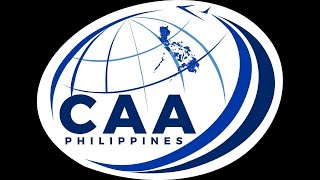The Civil Aviation Authority of the Philippines (CAAP) is a government agency that regulates and supervises civil aviation operations in the Philippines. It is responsible for ensuring the safety, security, and efficiency of the country’s aviation industry. Here are some key points about the Civil Aviation Authority of the Philippines:
- Regulatory Authority: CAAP serves as the regulatory body for civil aviation in the Philippines. It is tasked with implementing and enforcing national and international aviation regulations, standards, and practices. CAAP’s main objective is to ensure the safety and security of air transportation in the country.
- Air Traffic Control and Navigation Services: CAAP is responsible for managing and providing air traffic control (ATC) services. It oversees the operation of air traffic control towers, communication systems, navigation aids, and surveillance systems to maintain safe and orderly aircraft movements within Philippine airspace.
- Airport Development and Management: CAAP plays a role in the development, construction, and management of airports across the country. It formulates policies and standards for airport operations, infrastructure development, and safety measures. CAAP also ensures compliance with international aviation regulations and oversees the licensing and certification of airports and their facilities.
- Aircraft Registration and Certification: CAAP is responsible for the registration and certification of aircraft operating in the Philippines. It ensures that aircraft meet the necessary safety and airworthiness standards. CAAP also conducts inspections, audits, and evaluations of aircraft operators, maintenance organizations, and aviation training institutions.
- Aviation Safety Oversight: CAAP is primarily focused on maintaining and enhancing aviation safety. It conducts safety inspections, audits, and investigations to monitor compliance with safety regulations. CAAP collaborates with international aviation bodies, such as the International Civil Aviation Organization (ICAO), to align its practices with global safety standards.
- Licensing and Certification: CAAP issues licenses and certificates to aviation personnel, including pilots, flight attendants, air traffic controllers, and aircraft maintenance engineers. It ensures that these individuals meet the required training, qualifications, and competency standards for their respective roles in the aviation industry.
- International Relations: CAAP represents the Philippines in international aviation forums and organizations. It participates in discussions and negotiations to shape global aviation policies, standards, and practices. CAAP also collaborates with other aviation authorities to enhance cooperation, share best practices, and address common challenges in the industry.
By carrying out its mandate, the Civil Aviation Authority of the Philippines aims to foster a safe, secure, and efficient aviation environment that supports the growth and development of the Philippine civil aviation industry.
IMAGE GALLERY

CONTACT US
For details, do any of the following:
- Call or text me at 09460480491
- Message us on Facebook at https://www.facebook.com/rbsublimationsignage/



